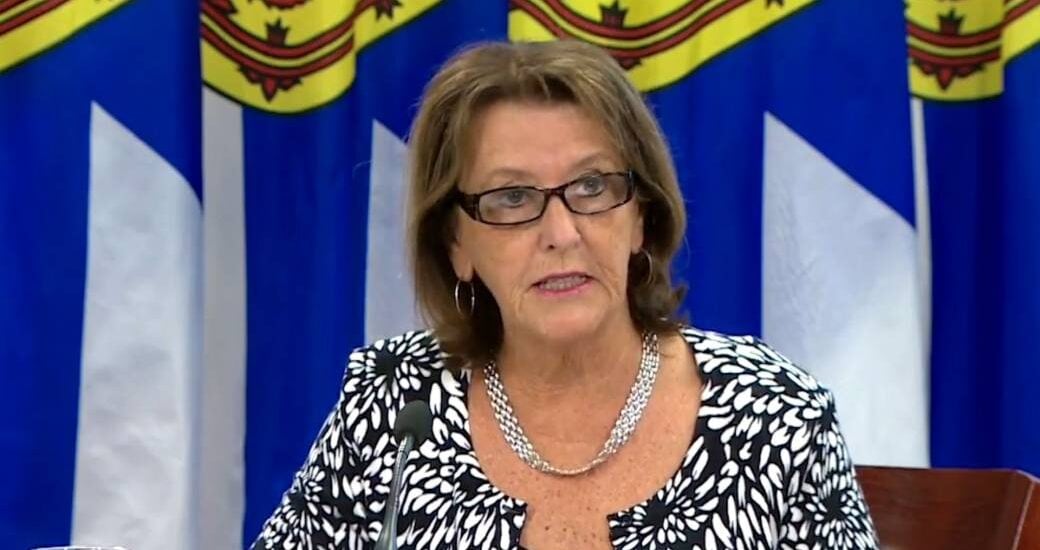Republished from Starr’s Point with Richard Starr’s kind permission. Originally published on August 3, 2020

KJIPUKTUK (Halifax) – Well after the federal government and most other provinces reported on the impact of the pandemic on public finances the McNeil government finally got around to releasing a fiscal update last week.
As will be recalled, the 2020-21 provincial budget was passed in early March but outdated within days as COVID-19 trashed all assumptions about revenues and expenditures. But although it was a long time coming, the update did not tell us a lot that is new about the state of Nova Scotia’s finances.
The marquee number, a deficit of $853 million, was close to, but slightly below, the deficit forecast several months ago by Scotiabank. And the main cause of the deficit – less revenue from a hobbled economy and more public spending to fight COVID-19 – was to be expected. And despite the update, there remain many unknowns – not least the progress of the pandemic, and the expense of getting schools and day cares open and university finances stabilized. On the revenue side, the update does not include forthcoming federal funding through Safe Restart transfers.
As it turned out, the big news from the update was not Wednesday’s presentation by the elusive Finance minister Karen Casey, but the spin put on it the next day by the Premier. Questioned about the possibility of fighting the COVID-caused deficit through public sector layoffs, McNeil seized the opportunity to wave a red flag in the direction of public sector unions, engaged in, or on the verge of, contract negotiations.
According to a CBC report, McNeil expects public sector workers to help reduce the deficit, presumably because they’ve been paid during the pandemic.
“It can’t be just the private sector who will be the ones to put us back in a good financial position…People need to understand that for four months there were many people in this province who lost their entire paycheque while others were continuing to be paid.” Labour, he said, must choose between layoffs or demanding pay increases beyond what the province can afford (which of course will be determined by McNeil).[1]
As Yogi Berra famously declared, it looks like “déjà vu all over again.”
McNeil’s first term was spent suppressing wages of public sector workers, a crowd-pleasing ploy dependent on exaggerating the fiscal problem. (Details reported here and here).
Back in 2014, the Liberals used an accounting gimmick to swell the size of the deficit inherited from the previous government, then employed the inflated deficit to justify its attack on collective bargaining rights. With last week’s fiscal update, they seem to be going for a repeat – not so much from what they said, but from what was not said. The update could credibly have been presented as relatively good news, instead of a prelude to the belt-tightening signalled by McNeil.
Better off than most
Because Nova Scotia is one of the last provinces to release updated information on the impact of COVID-19 on its finances we are able to compare our situation with others. That comparison shows that so far at least, the pandemic’s impact on provincial finances has been far less severe on Nova Scotia than most other provinces.
The table below shows the forecast deficit as a percentage of GDP for each province and the forecast increase in the net debt-to-GDP ratio for 2020-21
| Province | Deficit/GDP | Change in debt/GDP |
| Nova Scotia | 2.0% | 33.3% to 38.7% |
| Newfoundland | 7.3% | 40.8% to 57.0% |
| Prince Edward I. | 2.4% | 30.7% to 35.0% |
| New Brunswick | 0.8% | 34.7% to 36.8% |
| Quebec | 3.4% | 36.0% to 43.0% |
| Ontario | 5.0% | 40.0% to 49.7% |
| Manitoba | 4.0% | 34.2% to 40.7% |
| Saskatchewan | 3.3% | 14.7% to 20.8% |
| Alberta | 6.6% (e) | 10.0% to 20.0% (e) |
| British Columbia | 4.5% | 15.5% to 22.0% |
The figures for all provinces except Ontario and Alberta are based on official updates, compiled by Scotiabank[2].
As the middle column of the table shows, at two percent Nova Scotia’s forecast 2020-21 deficit as a percentage of GDP is lower than any province except New Brunswick. Net debt-to-GDP, a longer-term indictor of fiscal sustainability, puts Nova Scotia in the middle of the pack – better than four provinces and close to par with our Maritime neighbours. And the increase of 5.4 percentage points from the ratio of 33.3 forecast in the March budget is the third lowest jump, after New Brunswick and P.E.I.
Nova Scotia’s projected 2020-21 debt ratio of 38.7 percent is about where it was before the Liberals began their reign of austerity in 2014. The spike is a function of more spending and a smaller economy. If the economy rebounds as expected next year, the ratio will likely improve in 2021-22, even with the increase in debt.
Markets like?
In any case, the jump in the ratio from 33.3 to 37.8 this fiscal year doesn’t worry Scotiabank analyst Marc Desormeaux, whose report on the update was practically glowing. He noted that the debt ratio “falls well short of loads near 50% seen in the late 1990s and early 2000s.”He predicted the update would be “well-received by markets,” and added other optimistic observations.
…Nova Scotia maintains a number of advantages over other jurisdictions. Its comparatively modest COVID-19 infection rates have enabled earlier easing of lockdown measures and participation in the travel bubble with neighbouring provinces, which should support its key tourism sector. Its status as a regional hub for high-value services and niche manufacturing strength should cushion it relative to less diversified local economies. Moreover, its healthy fiscal position before the pandemic appears as though it will prevent deeper red ink and heavier debt loads. Finally, funds from the Safe Restart Agreement with the federal government -not included in the plan – present upside for future balances.
And then there’s the benefit of rock bottom interest rates – a saving of $21.9 million on debt servicing costs was reported in the update. A letter to the Chronicle-Herald by Michael Poulton of Halifax offered this astute observation on the government cost of borrowing.
An $853 million deficit for Nova Scotia in 2020 looks terrifying. That is, until you examine long term borrowing costs. A 30-year government of Canada bond costs the lender just one per cent interest. Long term Nova Scotia government bonds can be sold for two per cent. So if the Nova Scotia government scraps the Yarmouth-Maine ferry, it can finance the $853million deficit and have its liabilities pretty well unchanged. How hard is that?
Reacting to McNeil’s lurch back to the future on public sector bargaining, Gary Burrill nailed it when he described McNeil as “mired in pre-COVID fiscal policy.”
Post-COVID, public response to government deficits has changed, and the vital role played by public sector workers has become clear. The question for McNeil’s consideration is whether many Nova Scotians remain mired with him, still receptive to another round of debt paranoia and civil servant bashing.
[1] Here’s verbatim, according to CBC: “If the issue becomes that labour wants to continue to fight for more and more that the province does not have the ability to pay, then obviously that would mean there would have to be fewer people. They’re going to have to make that decision and I look forward to continuing to work with them.”
[2] The Ontario estimate is based on a report from that province’s Financial Accountability Office. And the estimates for Alberta are based on the February 2020 budget and media reports.
See also: Democracy in Nova Scotia: Still closed until further notice
With a special thanks to our generous donors who make publication of the Nova Scotia Advocate possible.
Subscribe to the Nova Scotia Advocate weekly digest and never miss an article again. It’s free!




“The update could credibly have been presented as relatively good news, instead of a prelude to the belt-tightening signalled by McNeil.” If there is indeed belt-tightening to come, then there is little doubt in my mind that those at the lower end of the socio-economic spectrum will feel it first and hardest.